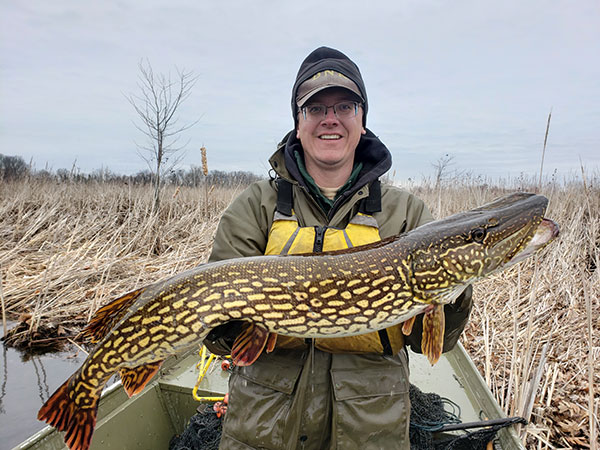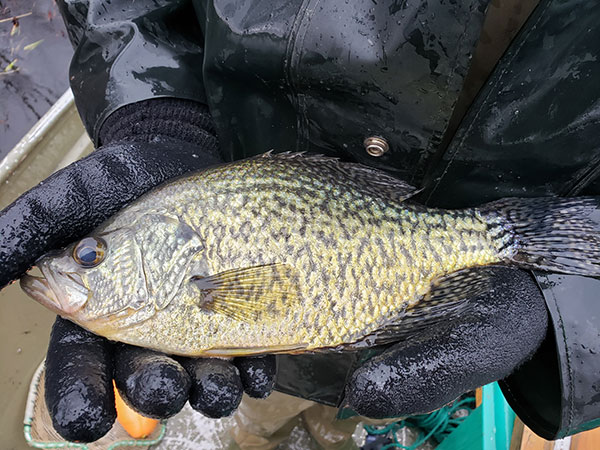By Louie Stout
Lake Wawasee’s fish population will be the focus of an Indiana DNR survey throughout this year, beginning with pike and crappie.
Biologists were there in mid-March surveying the pike and crappie population. They will return next month to review the bass population and again in June to evaluate entire fish community.
Although the full report hasn’t been processed, District Fisheries Biologist Tyler Delauder said early indications pike and crappie are doing well in the lake.
Pike
 Lake Wawasee Pike
Lake Wawasee Pike
The biologists set nets for pike for two days in the northeast corner of Johnson bay and in Conklin Bay. The nets were set in 6 feet or shallower. They were set again in late March and in similar areas for crappies. That is the time frame that those species are beginning spawn shallow.
They captured 22 pike that averaged 25 inches and the largest was 35 inches.
“We caught a lot of nice pike,” Delauder said. “I would say the population ranks toward the top when compared to other northern Indiana lakes. We will age them later to see how well they are growing.”
Crappie
 Lake Wawasee Crappie
Lake Wawasee Crappie
The team also caught 460 crappies ranging from 4.6 to 13.9 inches, averaging 9 inches.
“What we saw would make anglers happy to see,” Delauder noted.
Like the pike, the fish were released after being measured and documented.
He also saw a lot of bluegill, and bullhead catfish and a few bass in the nets but no perch, which surprised him.
“Hopefully we will get some perch when we’re there in June,” he said. “It could be we just missed them on this trip.”
Oddly enough, one net had about 30 good-size dogfish in it, which Delauder said was strange to see that many in a net at one time.
Bass
In May, biologists will do two nights of electroshock fishing to assess the bass population. They will run an electro-shock boat for two hours each night, surveying shallows and channels in search of pre-spawn or spawning bass. They will be measuring, weighing and collecting scale samples to age the fish.
Again, those fish will be released after data is gathered.
Delauder has heard reports from bass fishermen that the population of sizable bass has diminished. He hopes his survey – compared to one that was done a few years ago – will provide more insight as to what is going on. In June, the team will return to Wawasee to electro-fish and set trap nets over a two-week period to capture and sample all species of fish in the lake. Those details will be tabulated and compared to previous surveys.